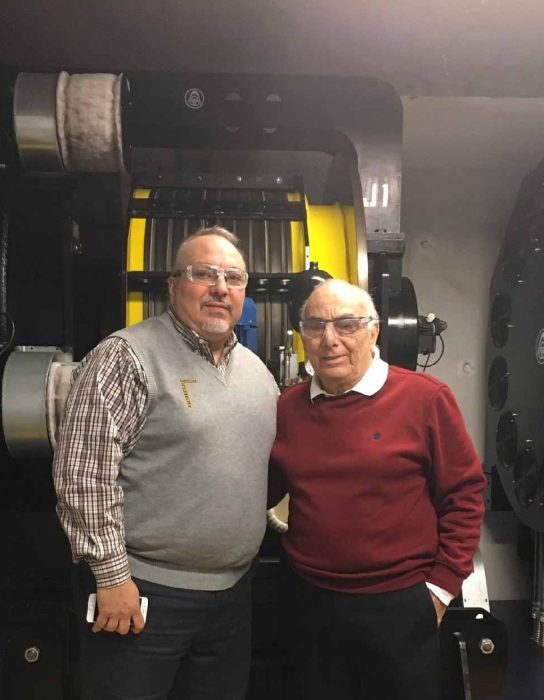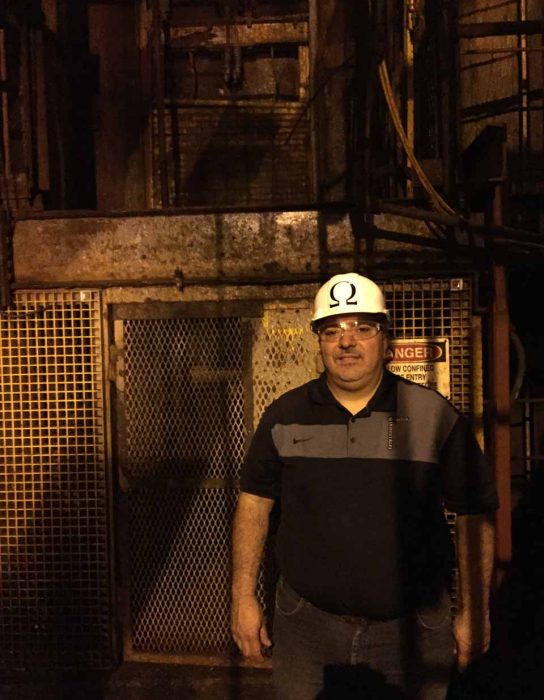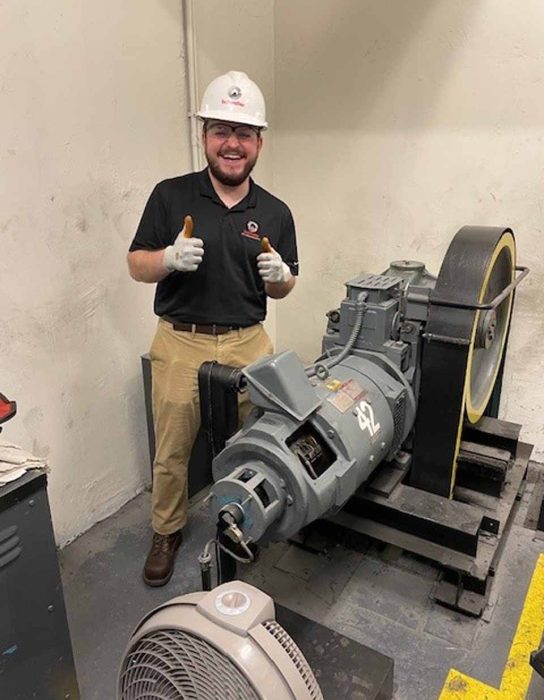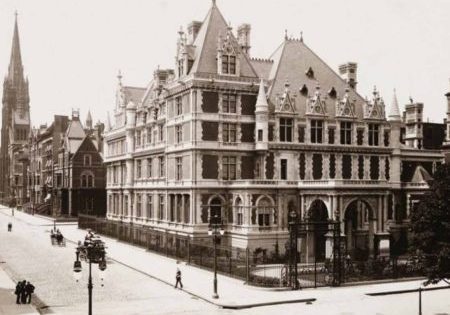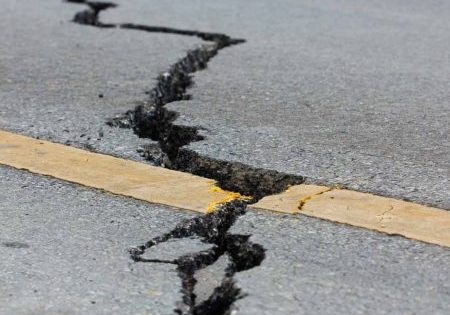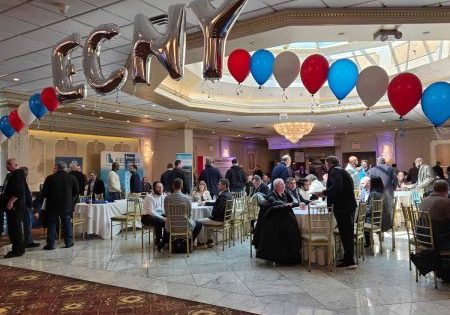Three DeColas
Jun 1, 2025
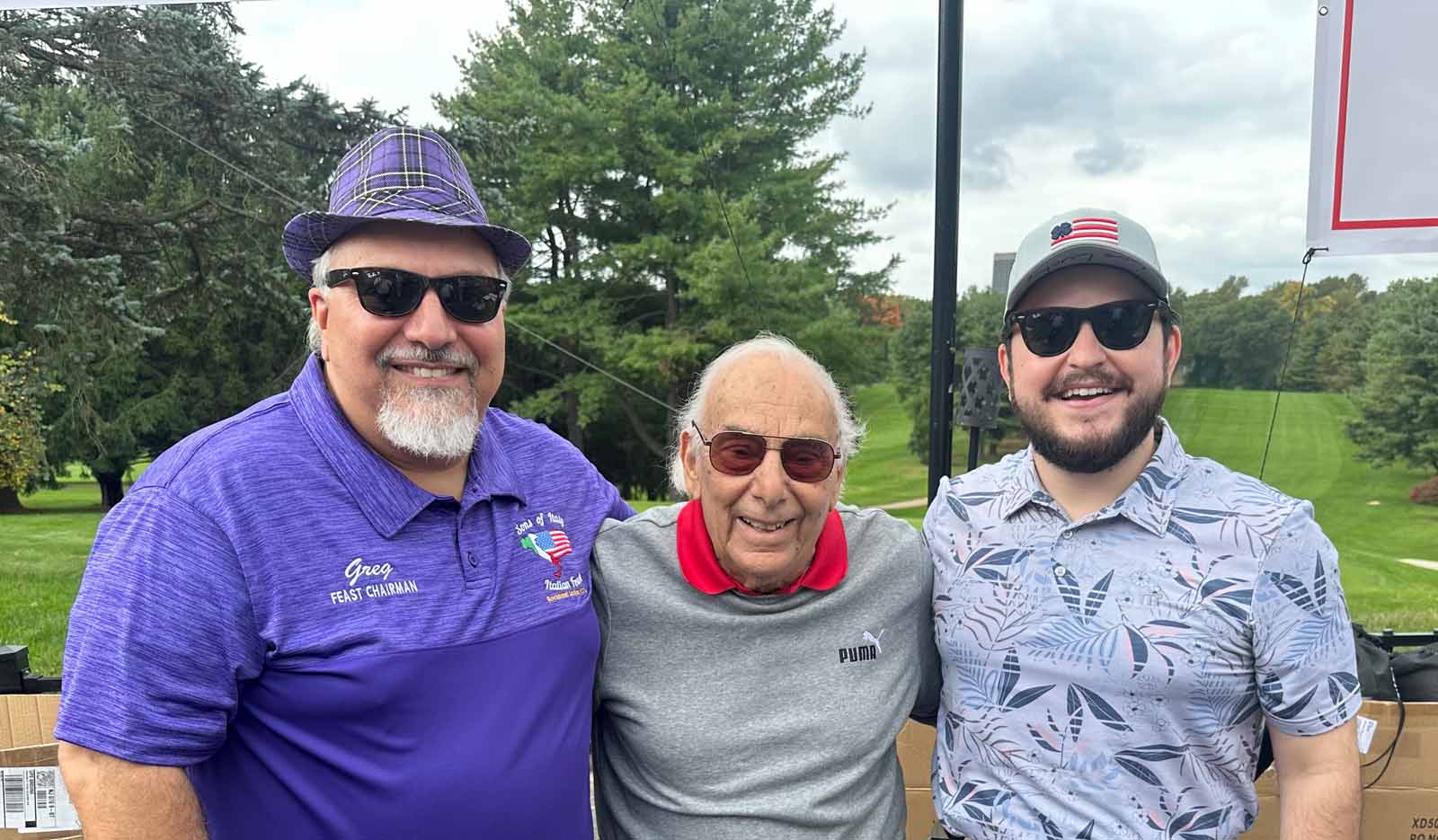
In the Bronx’s Little Italy, a family elevator legacy is born.
A story about three generations of NYC elevator men, all named Greg DeCola, was originally pitched to your author almost a year ago. The DeCola with whom she is most familiar — Greg DeCola Jr. — is always on the go supporting industry events nationwide. In fact, she spoke with him over beers at World of Beer in Tampa, Florida, during a Superbowl LIX networking event on February 9 prior to the Elevator Escalator Safety Foundation (EESF) Annual General Meeting. The next day, she and a colleague drove a golf cart out to the fifth hole to deliver cigars to DeCola and fellow golfers at Hunter’s Green Country Club during the inaugural EESF Golf Outing presented by ELEVATOR WORLD. We discussed an Industry Profile of “the three DeColas,” and DeCola Jr. was all for it. “My father loves the magazine,” he said. “It’s like his gossip column.”
In early March, your author finally sent a set of questions to Greg DeCola Jr., receiving thorough (and delightful) responses to all of her questions from DeCola Jr.’s son, Greg DeCola III, about a month after the young man had had a nice visit with his grandfather, the original DeCola. Responses from DeCola Jr. would follow.
Each of the men provided interesting and insightful answers that prove that while some things change, others — namely a passion for the elevator industry — stay the same. Please enjoy this Industry Profile.
Greg DeCola
The 1950s brought about major change for the U.S. construction industry. Demand for commodities like steel dropped after World War II, leading to the closure of mills including New Jersey’s Roebling Steel Mill, once a significant regional employer. Living with his wife, Diane, and raising daughters Deborah and Diane as well as a young son, Greg Jr., in the Bronx, Greg DeCola was among those laid off when the mill closed. He quickly found a job at a haberdashery off Arthur Avenue — Bronx’s Little Italy — where he would style and tailor hats and clothing for some of the neighborhood’s infamous Mafia members. It was fun and interesting work, but DeCola had a family to provide for, so when his friend, Sal, who worked at State Elevator (later acquired by Otis) offered him a job as a helper there, DeCola went for it. Besides, the mechanically minded DeCola always liked working with his hands, so it was a good fit. He worked his way up from helper to mechanic to foreman and ultimately, supervisor.
According to DeCola’s grandson, Greg DeCola III, his grandfather said the best part of the job was the “amazing pay” — the princely hourly sum of US$1.35. A close second was the diversity and, at times, glamour, of the work. “His job would allow him to rub shoulders with elite politicians and celebrities in Manhattan since he did a lot work in classy hotels,” DeCola III says, continuing:
“What was both challenging and rewarding was how versatile mechanics had to be during the 1960s. He told me a great story about visiting a warehouse in downtown Brooklyn and his supervisor telling him and his partner, ‘In three months, there will be an elevator here, and youse guys are gonna make it happen.'”
Old-School Problem Solving
They made it happen, handling everything from stacking the rails to installing the machine and cab. These days, DeCola III observes, there are different teams for each task, and everyone is specialized. In lieu of today’s digitalized solutions, old-school problem-solving was the order of the day. DeCola III says of his grandfather:
“One night a group of kids broke into the jobsite and stole all of their tools. My grandpa’s supervisor responded to this by buying a big German shepherd, which my grandpa trained to stay at the jobsite and guard the tools overnight. The dog stayed with the tools until the elevator was turned over, and not a single screw went missing for the rest of the job!”
Another time, in the 1970s, the elder DeCola was working as a troubleshooter who answered night calls. One night, he was dispatched to check on a shut-down passenger car at a NYC Housing Authority building in West Harlem. Since the elevator was not in operation, DeCola took the stairs to the motor room. When he reached the room and opened the door, he happened upon two homeless individuals doing drugs. Wearing his uniform of a blue collared shirt, dark jeans and a toolbelt, he was mistaken for a police officer, and one of the men pulled out a gun and shot at him. “Thank goodness he missed, but in my grandfather’s words, ‘I ran out of the motor room and down six flights of stairs so fast I did not feel a single step!'”

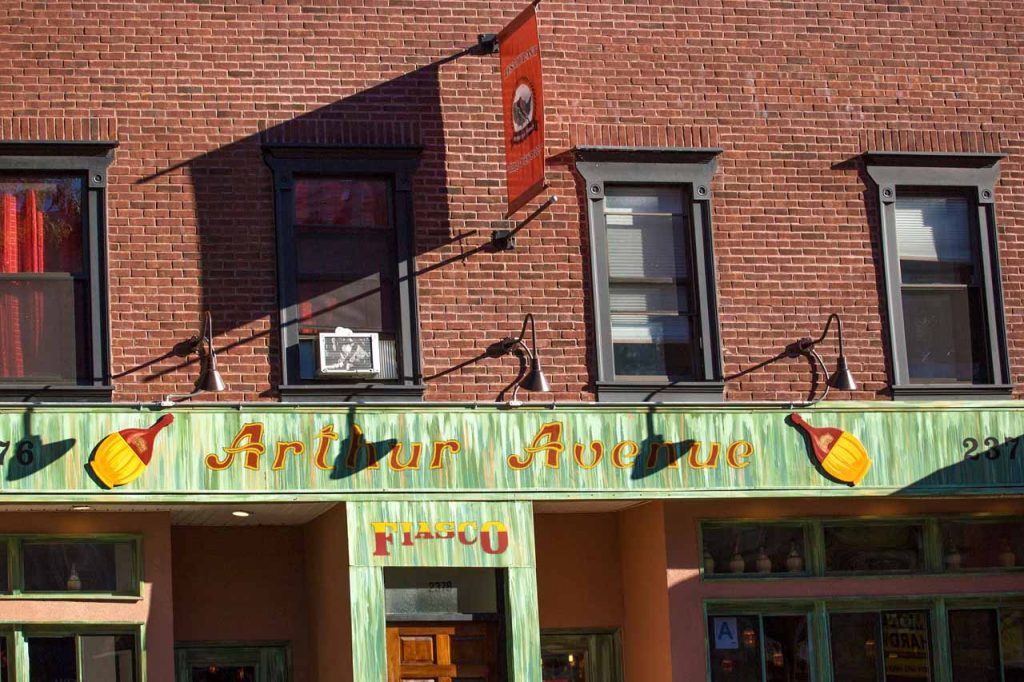
“Wheter it was someone in the office, a student in one of my classes or a Code committee member whio needed assistance, I enjoyed the challenge of getting to the root of the issue together and solving a problem.”
– Greg DeCola Jr.
Sea Change in Safety
It was a dangerous situation, and one that is far less likely to happen today. Regular, day-to-day safety on the job was also a lot different then, with DeCola III observing safety protocol is at the top of his grandfather’s list of changes he witnessed during his 40-year career. DeCola III says:
“Back when my grandfather was in the field, there were barely any safety regulations. There was no (personal protective equipment), and all of the hoisting and rigging were basic rope pulleys with no safeties. He told me that guys would get hurt all the time — that it was just a part of business. In the 1960s and 1970s, you were going to get hurt no matter what. The goal, instead of not getting injured at all, was to never get an injury that put you out of work. All he was given by his company were boots, black jeans and a blue work shirt.”
Greg DeCola Jr. says his dad is also amazed by how much elevator equipment has changed during his lifetime. When the elder DeCola started in the industry, everything was relay logic. As he transitioned into retirement in the mid-1990s, microprocessors were slowly being introduced. “Another challenge he would have if he were working today would be all the cell phone and email communication,” DeCola Jr. observes. “It’s just a different generation. He doesn’t understand how we get anything done these days!”
Greg DeCola retired after a long career that saw him transition into elevator consulting for United Elevator Consultants, and later, work with his son at Lift Tech Ltd. and Omega Industries as a part-time consultant and field inspector.
Greg DeCola Jr.
Greg DeCola Jr. started in the industry in the mid-1980s during the summer while he was still in high school, working for Archer Elevator in Manhattan where Greg Sr. was the operations manager in charge of running the maintenance department. His first summer, DeCola Jr. worked in the machine shop as a helper whose duties included rewinding coils and repairing machines and generators. His second summer, DeCola Jr. worked in the field painting elevator machine rooms throughout the boroughs. The next summer and during breaks from college at Alfred State College, DeCola Jr. worked in the field as a helper in Archer’s modernization and maintenance department.
DeCola Jr. was a college robotics major and almost went to work for Kodak in Rochester, NY, after graduation. When he weighed the pros and cons, however, “elevators were it for me,” he says. “I saw how my father’s life was impacted by this great industry and how he was able to provide for his family.” As a child, DeCola Jr. remembers being impressed that his dad had an emergency sign and flashing lights on his company vehicle. “I realized early on the importance of the job and how necessary it was,” he says.
When he graduated college, DeCola Jr. entered the field full time with Archer as a maintenance mechanic with a route on Manhattan’s Lower West Side. Later, he worked for Century Elevator in Queens as a field supervisor. He left Century Elevator in 2000 to go to work for Otis in multiple roles in the Manhattan office, from supervisor to branch manager.
At his kitchen table in the Bronx, DeCola Jr. launched Omega Industries in 2012. Offering elevator inspection, consulting, expediting and education, Omega quickly grew, added employees and eventually moved to an actual office. In 2015, Dan Hrivnak joined Omega as partner as the business continued to thrive. In early 2023, VDA, Inc., with corporate headquarters in East Hanover, New Jersey, approached Omega to acquire the company. “We were thrilled that one of the ‘gold standard’ consulting firms wanted to join forces with us,” says DeCola, who currently serves as VDA’s vice president of Codes and Standards.
Greg DeCola III
Because of his father’s and grandfather’s deep ties to the industry, joining it was a no-brainer for Greg DeCola III. Greg III worked summers and school breaks at Omega, helping his dad with office tasks and even shadowing inspectors as they performed CAT inspections throughout the city. He worked for Omega through college, and even had a stint in the field with D&D Elevator in Elmsford, NY, one summer. DeCola III says:
“I really got bit by the elevator bug by being out in the field in Manhattan. It was always such a special place for me as a kid, and I realized how important our job was to the function of the city since we were the ones making sure people were able to move safely every day.”
After earning his MBA in marketing from NY’s Binghamton School of Management in 2021, he spent a little time working for one of the major OEMs, ultimately leveraging his connections to achieve his current job as Schindler NYC modernization project manager.
When he’s not working on elevator projects, DeCola III plays drums in several local bands and does stand-up comedy. The stability of the elevator industry, he says, allows him to pursue these hobbies. “Also, the cast of characters I work with every day means I have no shortage of material for my stand-up set!”
Finding a Home in Elevators
Clearly, all three DeColas have found a home in elevators. Always a familiar face at industry events throughout the U.S., Greg DeCola Jr. says:
“I personally love the elevator industry and the camaraderie it has. I remember when I was just starting out, the mechanics would take time to teach me the proper way to repair an elevator. I also remember the life lessons I learned taking night calls. Whether it was someone in the office, a student in one of my classes or a Code committee member who needed assistance, I enjoyed the challenge of getting to the root of the issue together and solving a problem.”
The mentors Greg DeCola Jr. has had throughout his career are too many to count, and many have no idea they impression they made on him. Considering himself fortunate, he always feels the need to give back, supporting charity causes including the EESF (for which he serves as vice chair), JAWONIO (support for children and adults with special needs) and Sons of Italy, among many others. “The elevator industry is a real brotherhood,” DeCola Jr. says. “I can always count on them to support a charity golf outing, gala or any other fundraiser I am involved with.”
While the fourth generation of DeCola is not yet realized, chances are good that if and when it is, this proud elevator legacy that traces its roots to Little Italy in the Bronx will continue.
Get more of Elevator World. Sign up for our free e-newsletter.
